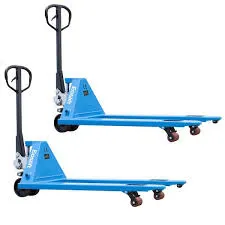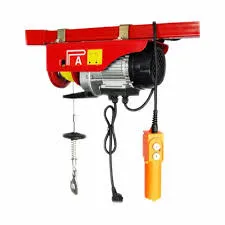When selecting a 110 volt electric hoist, it's vital to consider the factors that will ensure optimal performance and safety for your lifting projects. As an expert with extensive experience in the realm of electrical hoists, I can assure you that choosing the correct hoist involves evaluating a variety of specifications and features designed to meet diverse lifting needs.

Firstly, the capacity of the hoist is a primary consideration. Most 110 volt electric hoists can handle loads varying from 220 lbs to 2200 lbs, which are perfect for residential or light industrial applications. However, selecting the appropriate capacity hoist prevents the risks associated with overloading and ensures the longevity of the equipment. For a project that involves lifting bulky automotive parts, one should opt for a model with a higher load capacity, while a hoist for DIY enthusiasts working on smaller projects with lighter loads might suffice with a mid-range capacity model.
The lifting height and speed are another set of pivotal specifications. Typically, 110 volt electric hoists offer a lifting height ranging from 20 to 40 feet. Understanding the specific needs of your workspace, particularly the vertical clearance, will aid in selecting a suitable model. Furthermore, the lifting speed, generally varying between 10 to 30 feet per minute, determines how efficiently tasks can be completed. A faster hoist might be beneficial for projects where time is of the essence, though it's crucial to balance speed with stability to prevent accidents.

With experience comes an understanding that ease of use is paramount. High-quality 110 volt electric hoists feature user-friendly interfaces and remote control capabilities, allowing operators to manage lifting tasks safely from a distance. This is particularly useful for single-person operations and enhances safety by reducing the need for direct physical interaction with the load. Additionally, the installation process should be straightforward, often requiring minimal tools and effort, thereby making these hoists versatile enough for temporary or permanent setups.
Safety features and durability are non-negotiable aspects of an electric hoist. Models incorporating automatic braking systems, overload protection, and emergency stop functions are highly recommended. These features are essential for preventing accidents and ensuring safe operation. In terms of durability, a hoist with a robust construction of high-grade steel or a corrosion-resistant finish will offer long-term utility and sustained reliability in various environmental conditions.
110 volt electric hoist
Reliability of the manufacturer is another crucial element when purchasing a 110 volt electric hoist. Brands with established reputations tend to offer products that adhere to rigorous standards of quality and safety. Communities of practice, such as online forums and consumer reviews, provide insights into user experiences and can be invaluable for identifying hoist models with demonstrated dependability and support.
Trust in your equipment is substantially augmented through regular maintenance. Consistent inspection and servicing of the hoist, focusing on components like the motor, cable drum, and hooks, prevent unexpected failures and extend the equipment's service life. Employing a professional for periodic maintenance helps in addressing wear and tear issues before they escalate, maintaining both reliability and safety.
Evaluating the cost-effectiveness of a 110 volt electric hoist involves considering not just the purchase price but the overall value, including the aforementioned attributes, to meet your requirements. Investing in a reliable and efficient hoist reduces downtime and enhances productivity, ultimately offering a return on investment that justifies the upfront expense.
In conclusion, acquiring a 110 volt electric hoist involves a meticulous assessment of capacity, speed, safety features, and manufacturer reputation, coupled with regular maintenance practices. By prioritizing these factors, you ensure not only the efficiency and safety of your lifting tasks but also reinforce trust and authority in your operational capabilities.








